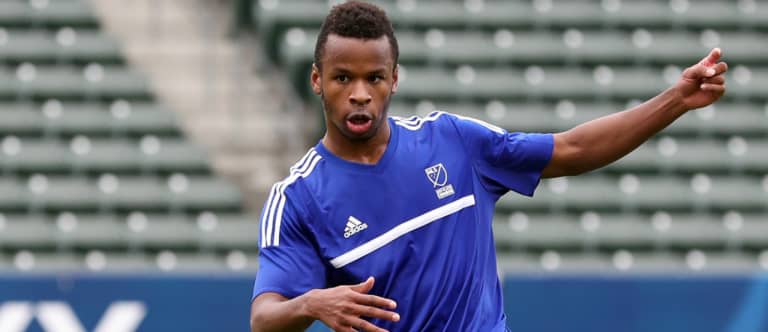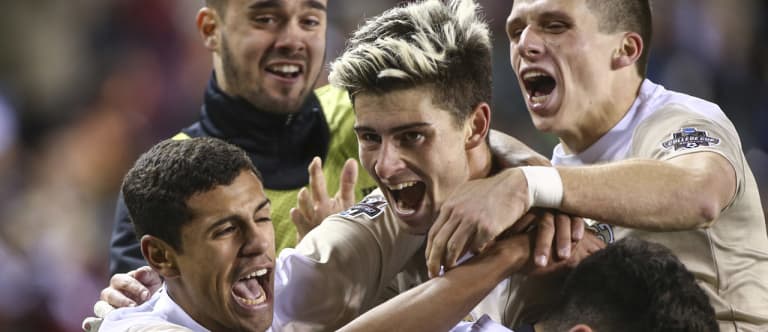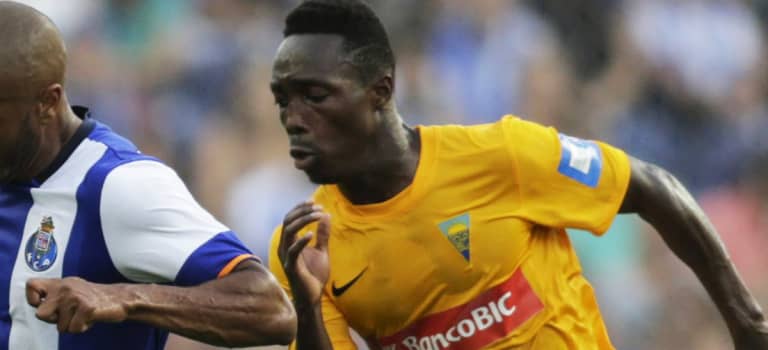Howdy folks! Welcome to this edition of the Upgrade, a new series tracking MLS players in EA SPORTS FIFA 17. This week, we’re focusing on SuperDraft picks, Homegrown signings, and new faces in new places around the league -- and how it all plays out when you want to play FIFA.
Welcome to the new class
The EA team recently added a bunch of 2017 MLS SuperDraft picks to FIFA 17, along with some very recent Homegrown signings, including Hermann Trophy-winner and very promising midfielder Ian Harkes. Their player ratings in the game provide plenty of stuff to chew on. Unfortunately, not all of it tastes very good. Let's break it down:
Most Surprising
After one week of roster updates, most of the 2017 SuperDraft picks have seen their FIFA ratings rise. San Jose’s Jackson Yueill, for example, saw his overall rating jump from a very underwhelming 48 to a much more reasonable 61. New York City FC’s first-round pick Jonathan Lewis saw a similar jump, with his dribbling, strength, crossing, and composure ratings each jumping by at least 20 points.
These jumps from cartoonishly low ratings to more reasonable, although still not-the-best ,profiles of young players are not uncommon in FIFA. It’s hard for EA to predict how these players’ college exploits will transition to the pro game, but once film and performance analytics start coming across the table, the numbers will start to reflect reality.
All of this, of course, makes the profile for the Timbers' pick, Jeremy Ebobisse, a bit of a head-scratcher. After going on an absolute tear with the U.S. U-20s, signing with MLS, and getting professional experience with the USL’s Charleston Battery in 2016, Ebobisse’s ratings don't yet match up.
His overall rating of 55 and potential of 67 don’t seem to reflect the consensus hype surrounding him as one of the USMNT’s most promising prospects, especially after the year he had in 2016. Let's briefly recap that: He scored five goals in eight appearances with the U-20s, including a hat trick against the Netherlands, and notched his first professional goal during his limited time in Charleston.
But it certainly didn’t seem to do him any favors in FIFA 17. A finishing rating of 49 (yikes), dribbling and short passing ratings of 48 (audible groans), and a ball control rating of 50 (yikes again) are remarkably sub-optimal. Pair those with shot power and positioning ratings in the fifties, and you’ve got a player who is pretty much unusable in-game for now.
However, even though Ebobisse’s low rating surprised me the most, I expect him to grow quite a bit early on in the season. He’ll be competing for minutes in Caleb Porter’s side in real life, and I expect him to make some noise. A ten-point overall jump in FIFA by, say, July is entirely possible.

Jeremy Ebobisse at the MLS Combine; Photo by Andy Mead/MLS
Ian Harkes might be pretty good, folks
Jeremy Ebobisse’s rating struck me as harsh and incomplete, but D.C. United Homegrown Ian Harkes’ was pretty flattering. A very well-balanced center midfielder with an overall of 66 and a potential of 79 is a rare sight as an introductory rating for an NCAA product.
Jordan Morris, who at that point in his career already had a few international caps and a goal to his name, came in to FIFA at a 64 overall with a 76 potential rating. I don’t know why so much attention was paid to Harkes’ stats, but a majority of his key ratings are in the upper 60s, which is downright kind. I guess there was a reason Derby County was sniffing around.

Ian Harkes in action at Wake Forest; photo via USA Today Sports Images
Watch out for Dallas and SKC
It’s silly season in MLS and there are player moves happening all over the map. Whether it’s international wingers, blockbuster intra-league trades, or Atlanta United (who don’t exist in FIFA 17) trying to scoop up every last player in the Argentine league, the signings are coming thick and fast.
Much like IRL MLS, speed is an absolutely devastating weapon in FIFA 17. The ability to break open a match on a counter is often the deciding factor, which makes pacey wingers a hot commodity.
Dallas snagged one in the form of Belgian international Roland Lamah, who looks to be a capable replacement for Fabian Castillo, who recently completed a permanent move to Trabzonspor in Turkey. With a sprint speed rating of 92, agility at 91, and satisfactory dribbling and ball control ratings of 71 each, this is a guy who can do some serious damage in-game. It’s not just his pace and skill that make him a useful player; he can also hit quite a free kick. An 83 curve rating and free kick accuracy at 78 means he can make walls absolutely useless and ineffectual down in Texas.
Sporting Kansas City got a similarly dynamic winger in Gerso Fernandes, a 25-year-old who arrives from Portugal’s Belenenses. He’s a better dribbler than Lamah, and his sprint speed, acceleration, and agility ratings are all in the 90s. While he’s not a set piece sniper like Lamah, this man can absolutely tie a defense in knots. He gives SKC the kind of dynamism they’ve lacked on the wing, and makes them a much more exciting team in-game. The complementary attacking prowess of him, Benny Feilhaber, and Dom Dwyer is pretty scary.

Gerso Fernandes in 2015; photo by Miguel Vidal via Action Images / Reuters
Chicago!
In other news, the Chicago Fire are finally a fun team to play as in FIFA 17! They brought in Dax McCarty from the Red Bulls to partner with former Galaxy stalwart Juninho in midfield, and added a very solid striker in Nemanja Nikolic. All of these moves represent significant upgrades over the Fire’s existing personnel, and now you can ball pretty hard with them.
Dax and Juninho contribute to a balanced, useful center midfield, while Nikolic, whose overall rating of 76 puts him in the upper echelon of MLS forwards, provides a great target for David Accam’s entry passes. Things are finally starting to look up in Chicago, at least in the digital realm.

Nemanja Nikolic at Legia Warsaw; photo via Legia Warsaw








